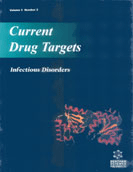Abstract
A solid and useful connection exists among eating regimen and malignancy. An inaccurate diet may increase the incidence of all types of cancer from 10% to 70%. Polyphenols are found in more than 700 foods, particularly foods grown on the ground (such as herbs), flavorings, and even nuts and cocoa items. Many food items considered superfoods; top superfoods include blueberries, apricots, grapes, olives and olive oil, artichoke, herbs (e.g., oregano, peppermint, and cloves), nuts and seeds (e.g., walnuts, almonds and flaxseeds), and green tea. Polyphenolic compounds can lead to epigenetic modification of chromatin and modulation of membrane organization; they can also interfere with interaction of the various macromolecules and regulation of the telomerase activity. They play crucial roles in modulating the multiple cellular pathways individually. Pure polyphenolic agents may be used as therapeutic agents, in combination with conventional therapy for improved cancer treatment. This chapter summarizes the anticancer efficacy of major polyphenolic compounds and discusses the potential mechanisms of action based on epidemiological studies.
Keywords: Cancer, Chemoprevention, Curcumin, Epithelial Mesenchymal Transition, Epigenetics, Epigallocatechin-3-Gallate, Genistein, Histones, Inflammation, Lycopene, Metastasis, Methylation, Polyphenol, Resveratrol, Sulforaphane, Transcription Factors.






















